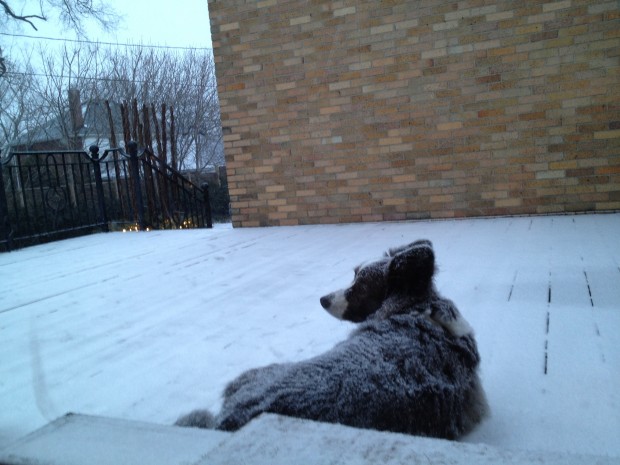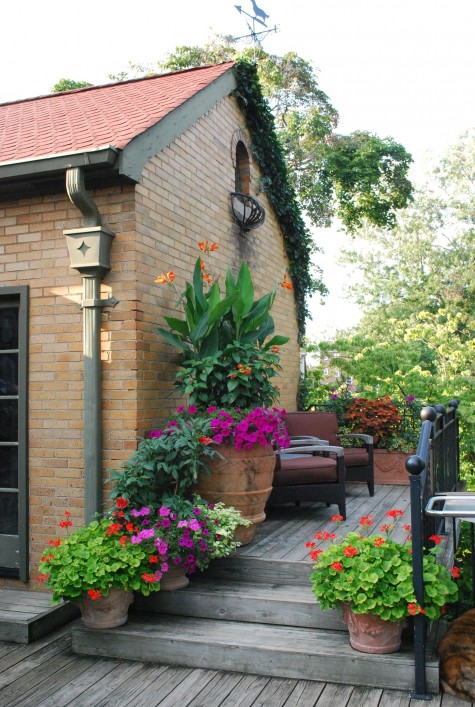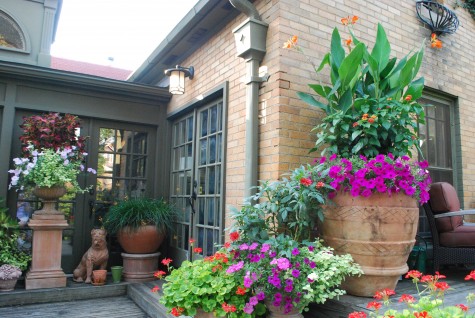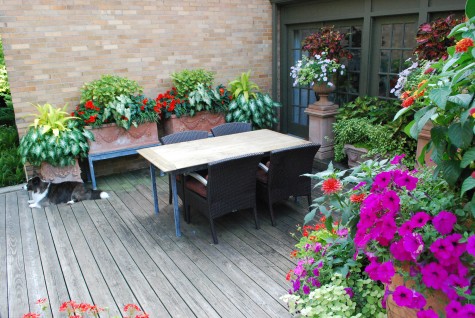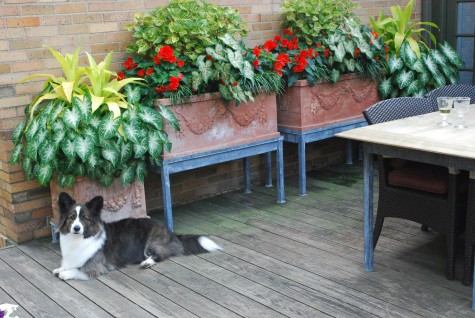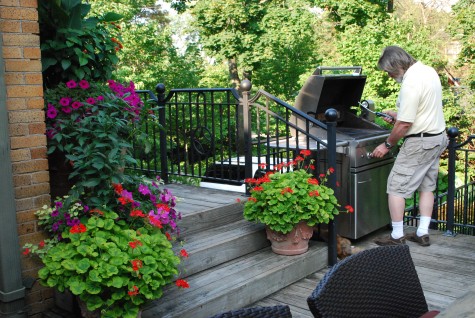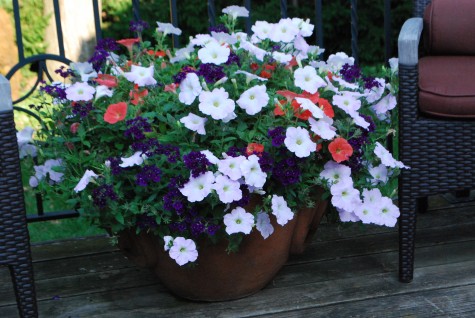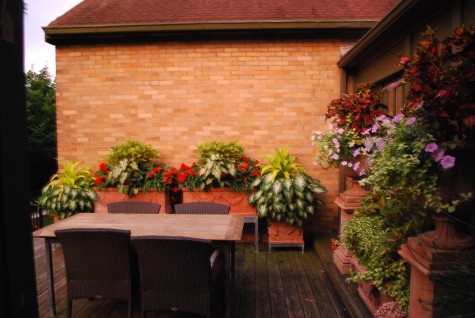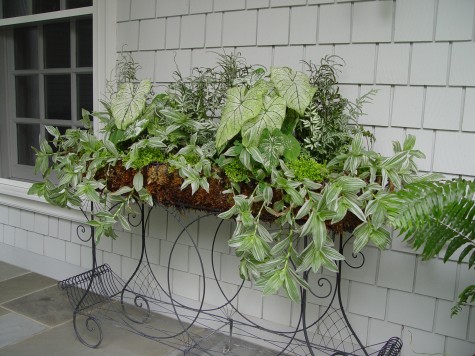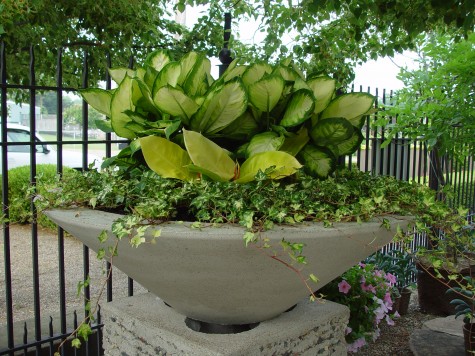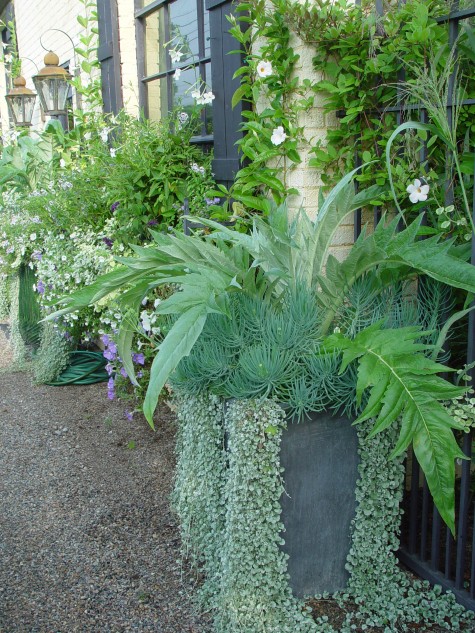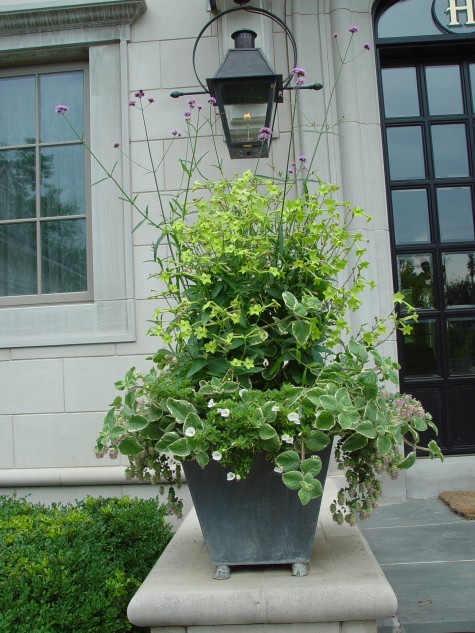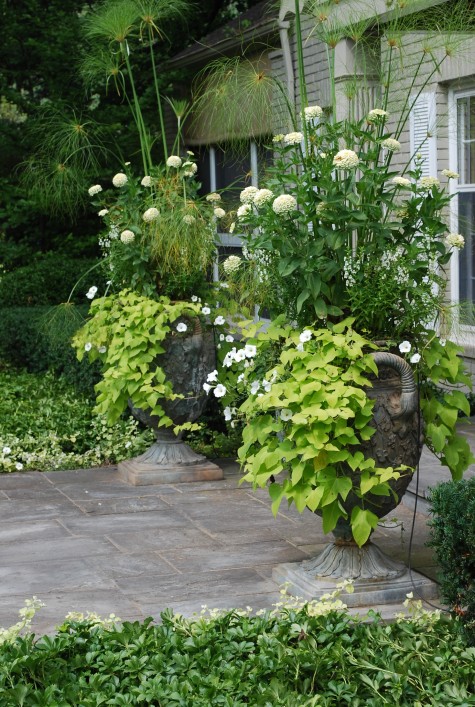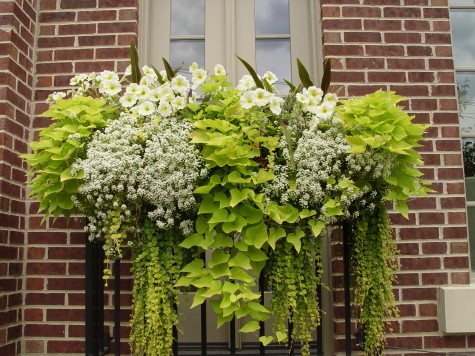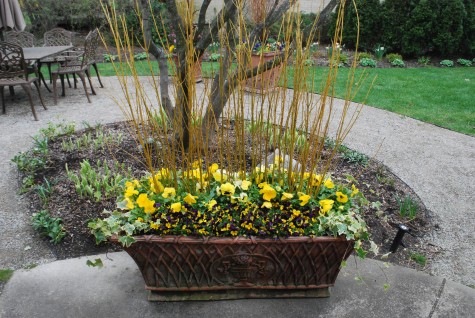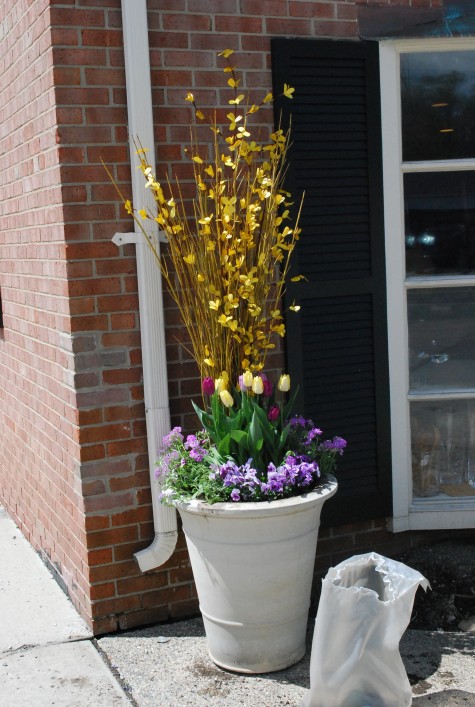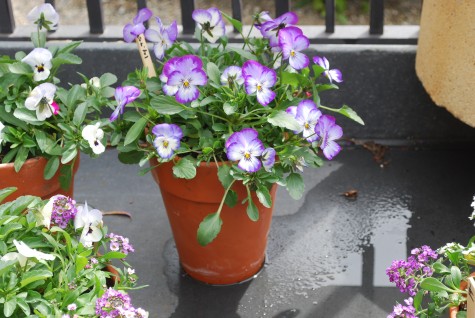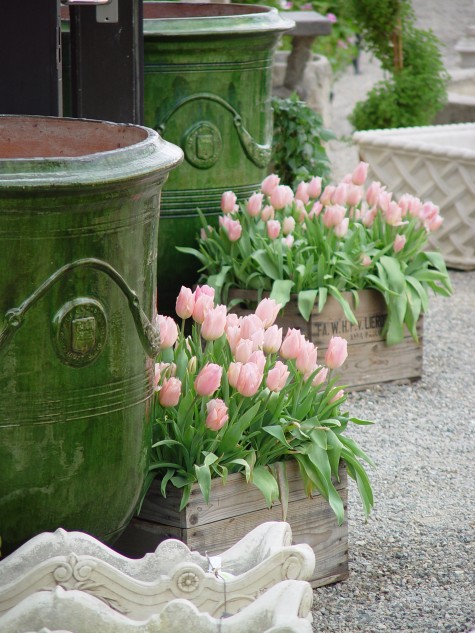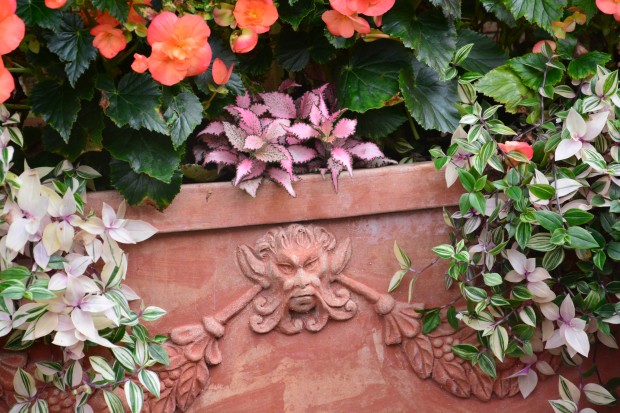 We have had a long run of cold and rainy weather. As in overnight temperatures in the high 40’s and low fifties, and close to 6 inches in one day, last week. I don’t think the pink fittonia has grown an inch.
We have had a long run of cold and rainy weather. As in overnight temperatures in the high 40’s and low fifties, and close to 6 inches in one day, last week. I don’t think the pink fittonia has grown an inch.
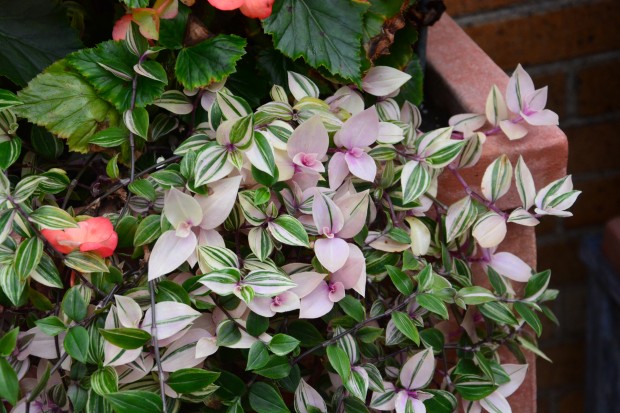 However, this variegated tradescantia is really thriving-the color is so beautiful. It almost looks like it is blooming. I will plant this again, no doubt.
However, this variegated tradescantia is really thriving-the color is so beautiful. It almost looks like it is blooming. I will plant this again, no doubt.
 The begonias have held up amazingly well in the cold rainy weather. The caladiums and alocasia are so so-I would guess they are shuddering from the cold.
The begonias have held up amazingly well in the cold rainy weather. The caladiums and alocasia are so so-I would guess they are shuddering from the cold.
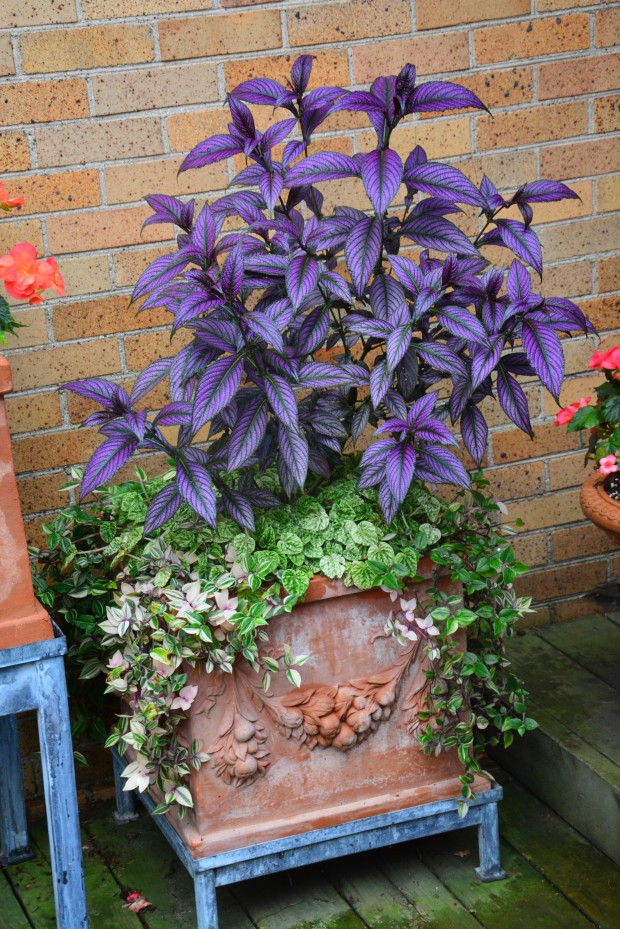 The Persian Shield on this north wall is such a beautiful iridescent purple. In full sun, the leaves green up-the resulting purple/green mix is a muddy color. This pot is holding its own. I have had the Persian Shields grow 3 feet in a single season. Not this year.
The Persian Shield on this north wall is such a beautiful iridescent purple. In full sun, the leaves green up-the resulting purple/green mix is a muddy color. This pot is holding its own. I have had the Persian Shields grow 3 feet in a single season. Not this year.
 This lavender New Guinea impatiens is completely out of bloom, but is setting buds. They hate chilly weather.
This lavender New Guinea impatiens is completely out of bloom, but is setting buds. They hate chilly weather.
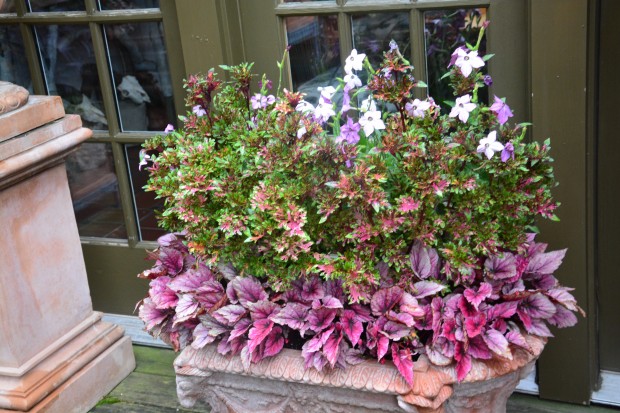 The nicotiana has had quite a bout with white fly. I can’t remember ever dealing with that before. I sprayed the foliage with water every day. Who knows if that helped. The cold may have slowed them down. I don’t see them anymore, but the nicotiana were damaged. The coleus is filling in for them.
The nicotiana has had quite a bout with white fly. I can’t remember ever dealing with that before. I sprayed the foliage with water every day. Who knows if that helped. The cold may have slowed them down. I don’t see them anymore, but the nicotiana were damaged. The coleus is filling in for them.
 The plants in this pot seems to be thriving.
The plants in this pot seems to be thriving.
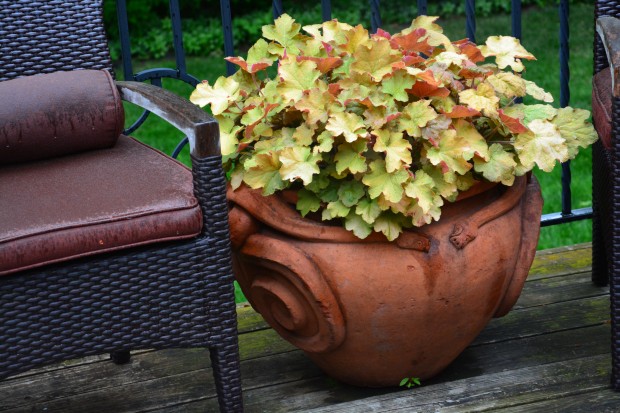 The cool and rainy weather has not fazed the heuchera one bit. They have put on some weight.
The cool and rainy weather has not fazed the heuchera one bit. They have put on some weight. 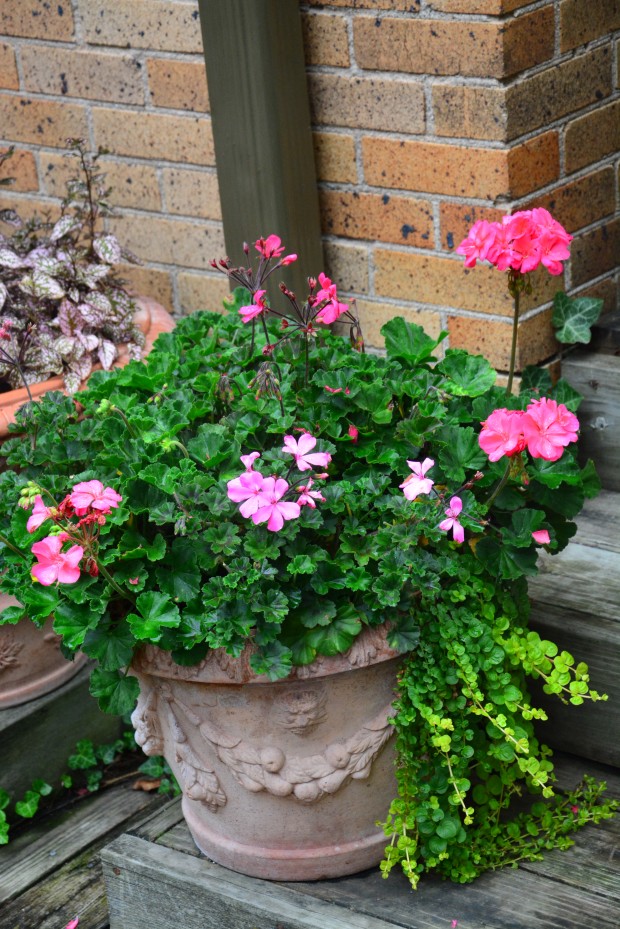 The geraniums have not been happy. They like it hot, and on the dry side. But these Caliente geraniums are bravely budding up. It is hard to keep a good plant down.
The geraniums have not been happy. They like it hot, and on the dry side. But these Caliente geraniums are bravely budding up. It is hard to keep a good plant down.
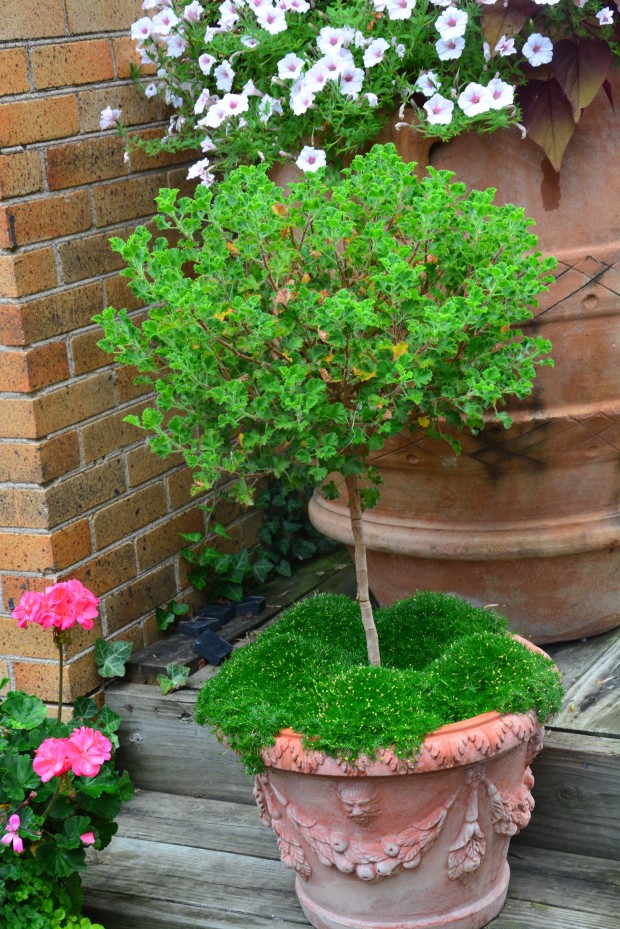 The scented geranium topiary is shedding interior leaves. This is a sign of water stress-either too much, or too little. The scotch moss is loving the sun, the rain, and the cool.
The scented geranium topiary is shedding interior leaves. This is a sign of water stress-either too much, or too little. The scotch moss is loving the sun, the rain, and the cool.
 I have no complaints with the Italian olive jar. Every plant is bearing up, in spite of the unseasonably wet and cold weather.
I have no complaints with the Italian olive jar. Every plant is bearing up, in spite of the unseasonably wet and cold weather.
 Container plantings are a joy, and a trial. Our summer has been cold and cool-no tropical plant loves this. I keep hoping for that warm up that never comes. By this time of year, my deck pots are usually overflowing. Do I have any complaints? Not really.
Container plantings are a joy, and a trial. Our summer has been cold and cool-no tropical plant loves this. I keep hoping for that warm up that never comes. By this time of year, my deck pots are usually overflowing. Do I have any complaints? Not really.
